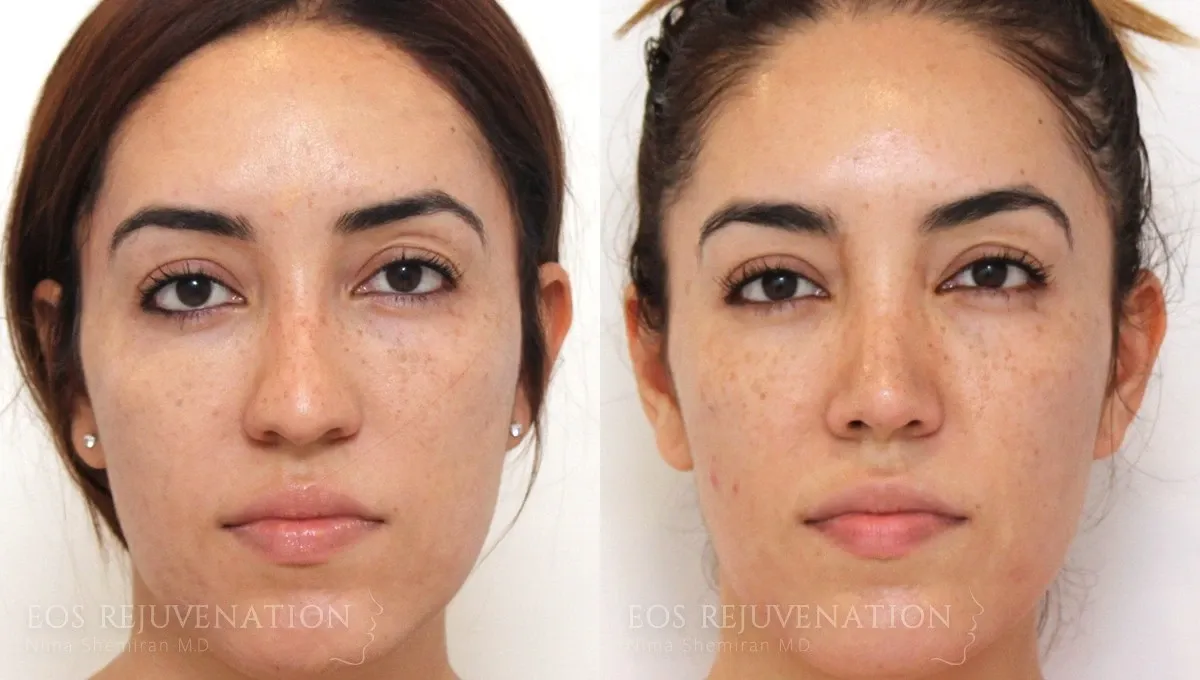Microneedling sessions are a minimally invasive treatment that has been shown to help reduce the appearance of acne scars. In this article, we’ll explore how microneedling works, how many sessions are typically needed, and what to expect during and after treatment. Acne scars are a common skin concern that can affect people of all ages and skin types. They can be caused by severe acne or picking at pimples, and often leave behind uneven texture and discoloration on the skin.
What is microneedling?
Microneedling, also known as collagen induction therapy, is a cosmetic procedure that uses a device with tiny needles to puncture the skin. The needles create micro-injuries that stimulate the skin’s natural healing process and promote collagen production. Collagen is a protein that gives skin its elasticity and firmness, and can help improve the appearance of fine lines, wrinkles, and scars.
Microneedling sessions can be done on various parts of the body, including the face, neck, and hands. It can help with a range of skin concerns, including acne scars, fine lines and wrinkles, hyperpigmentation, and uneven skin tone.
How does microneedling work for acne scars?
Microneedling sessions work by creating controlled micro-injuries in the skin. These injuries trigger the body’s natural healing process, which includes the production of collagen and elastin fibers. These fibers help to repair and remodel the skin, resulting in smoother texture and improved appearance.
For acne scars specifically, Microneedling sessions can help to break up scar tissue and stimulate collagen production. This can help to fill in the depression left behind by acne scars and improve overall texture and tone.
Factors that affect the number of microneedling sessions needed
The number of microneedling sessions needed to see results can vary depending on several factors, including the severity of the scarring, the age of the scars, and the individual’s skin type.
Severe acne scars may require more sessions than mild scarring, as they may be deeper and harder to treat. Older scars may also require more sessions, as they may be more resistant to treatment. Additionally, individuals with darker skin tones may need more sessions, as they may be at a higher risk of hyperpigmentation.
The typical number of microneedling sessions for acne scars
On average, most individuals need between 3-6 microneedling sessions to see noticeable improvements in their acne scars. These sessions are typically spaced 4-6 weeks apart to allow for proper healing and collagen production.
However, the number of sessions needed can vary depending on the severity of the scarring and the individual’s skin type. Some individuals may see results after just one session, while others may require more than six to achieve their desired results.
What to expect during a microneedling session
In your microneedling sessions, the skin will be cleansed and numbing cream may be applied to reduce discomfort during the procedure. The microneedling device will then be passed over the skin in a specific pattern, creating tiny punctures in the skin.
Most individuals report feeling a slight prickling or stinging sensation during the procedure, but it is generally well-tolerated. After the procedure, the skin may be red and slightly swollen, but this typically subsides within a few hours to a day.
Aftercare and recovery from microneedling for acne scars
After a microneedling session, it is important to avoid sun exposure and to use a gentle cleanser and moisturizer on the skin. Avoiding harsh skincare products and makeup for the first few days after treatment can also help to reduce irritation and promote healing.
It is also important to stay hydrated and to avoid picking at any scabs or dry patches that may form on the skin. Results from microneedling can take several weeks to become visible, as collagen production and skin remodeling occur gradually over time.
Risks and side effects of microneedling
As with any cosmetic procedure, there are risks and potential side effects associated with microneedling. These include redness, swelling, bruising, and minor bleeding at the treatment site. In rare cases, infection and scarring can occur.
It is important to choose a reputable provider for microneedling and to follow all aftercare instructions carefully to minimize the risk of complications.
Alternatives to microneedling for acne scars
Microneedling is just one of several treatments that can help to improve the appearance of acne scars. Other options include chemical peels, laser resurfacing, and dermal fillers.
Each of these treatments works differently and may be more or less effective depending on the individual’s specific scarring and skin type. Consulting with a skincare professional can help to determine the best treatment plan for your needs.
Microneedling for other skin concerns
Microneedling can also be used to address a range of other skin concerns, including fine lines and wrinkles, hyperpigmentation, and uneven skin texture. It is a versatile and minimally invasive treatment that can be customized to each individual’s specific needs.
Conclusion
Microneedling is a promising treatment option for individuals with acne scars. While the number of sessions needed can vary depending on several factors, most individuals see noticeable improvements after 3-6 sessions. It is important to choose a reputable provider and to follow all aftercare instructions carefully to minimize the risk of complications. If you are considering microneedling for your acne scars, consulting with a skincare professional can help to determine the best treatment plan for your needs.
